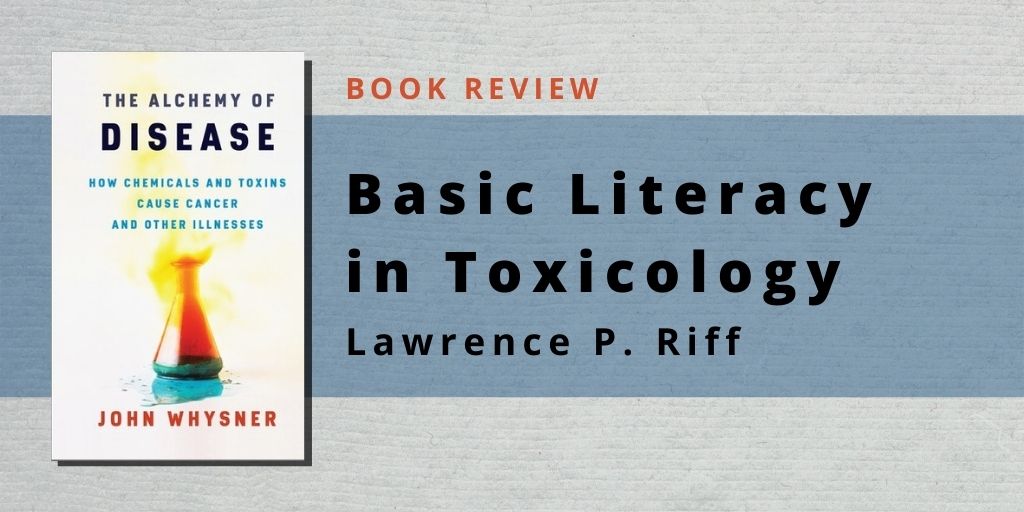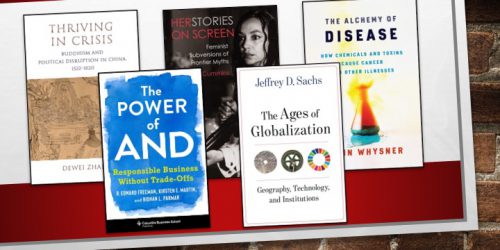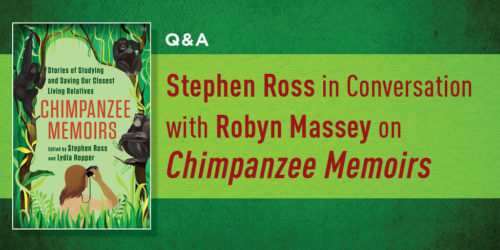Book Review: Basic Literacy in Toxicology
Lawrence P. Riff

Review of The Alchemy of Disease: How Chemicals and Toxins: Cause Cancer and Other Illness, by John Whysner, as published in the Los Angeles Daily Journal.
• • • • • •
In the age of Covid-19, we are all armchair epidemiologists. We study charts and maps as the virus moves through regions and subpopulations; we fervently debate the effect of mask-wearing and school-reopening on “R” values of viral transmission. And soon, if not already, we will all be armchair virologists. We will speak easily of vaccine candidate antibody titers and the outcomes of Phase Three population studies. These topics closely relate to a larger branch of human knowledge—toxicology, the study of how and why certain things external to our bodies cause disease, and its fraternal twin—pharmacology, the study of how and why certain things external to our bodies are beneficial to our health.
In fact, we are already armchair toxicologists, too. The most famous dictum of toxicology is “the dose makes the poison” and each of us has long known and experienced that truth. We know that four hours in the blazing sun has a different effect on our skin than four minutes; that forty cigarettes per day (two packs) for twenty years has a different effect on our lungs and heart than one cigarette per week; that imbibing a bottle of wine has a different effect on our eye-hand coordination than one glass. That’s dose-response and that’s toxicology.
“Indeed, if one is going to read but one slim book on the enormously interesting and important aspect of the human experience captured in the word “toxicology”, this is a great candidate.”
But what if an educated person, curious about the world, intrigued by the human species’ historical acquisition of specialized knowledge, inquisitive about the scientific method as applied to common phenomena, fascinated by the subtle difference in the meaning of “causation” in a scientific laboratory and a courtroom—what if that person wanted to spend a modest amount of time learning a lot more about toxicology? That person should read The Alchemy of Disease—How Chemicals and Toxins Cause Cancer and Other Illnesses written by John Whysner. Indeed, if one is going to read but one slim book on the enormously interesting and important aspect of the human experience captured in the word “toxicology”, this is a great candidate.
Whysner is a physician and board-certified medical toxicologist with fifty years in the fields of toxicology and occupational health. He is a former Associate Professor of Environmental Sciences at the Mailman School of Public Health at Columbia University. (Disclosure: in a former life, I met and retained Dr. Whysner as an expert witness in litigation; further disclosure: Dr. Whysner’s editors asked me to comment on a draft chapter of this book.) From the acknowledgements and introduction, one might fear the book is a vanity “my life in the trenches” memoir but it is a far weightier endeavor, although Whysner does punctuate his text with personal experiences—such as his hands-on work with venomous snakes. The Alchemy of Disease is organized in four parts: the need for and early history of toxicology; the historical development of knowledge about toxic and carcinogenic of chemicals; the practical use of toxicology in regulating human and industrial activities; and current controversies and the unfinished business of toxicology.
“The book’s title is an homage to the greatest historical figure of toxicology, a Swiss alchemist from the Middle Ages, Paracelsus.”
The book’s title is an homage to the greatest historical figure of toxicology, a Swiss alchemist from the Middle Ages, Paracelsus. Confronting a syphilis epidemic in Naples in the early 16th century, Paracelsus began systematic experimentation with the use of (very) toxic heavy metals—lead arsenic, antimony—in modest doses to treat the disease. His inspired insight is, as noted, the first precept of toxicology: all things are poison in a sufficient dose—but it is the dose alone that distinguishes between the poison and the cure. Hence also springs the science of pharmacology with its focus on the Goldilocks “just right” effective dose for a therapeutic response and avoidance of the effects of overdose.
Whysner’s writing is clear and uncomplicated but the reader is not patronized nor talked down to. It is a trite word for a review but apt here: the book is accessible and requires no more background in science than a healthy curiosity. Whysner’s factual and scientific assertions are well footnoted and the volume contains a useful index. This is a serious effort on a serious subject.
“This fine book presents an efficient and highly enjoyable way to learn the principles and history of the monumental subject of toxicology.”
The great milestones and controversies of toxicology are presented including: the enigma of cancer clusters; the boom of the synthetic chemical and pesticide age in the mid-20th century and the world-wide lag in regulatory oversight (remember Superfund sites?); Rachel Carson and her influence; how cancer is induced by chemical attack on DNA and by mechanisms as prosaic as irritation; the public health nightmares of cigarette smoking and asbestos; the science and politics of occupational safety and health regulation; toxicology in the courtroom (remember A Civil Action?); opiates and politics (remember “the war on drugs”?); the importance and limitations of the use of animal testing to predict human health effects; hormone disruption; and the toxicology of climate change. And more.
We all have only so much time on this Earth and so much to learn. This fine book presents an efficient and highly enjoyable way to learn the principles and history of the monumental subject of toxicology.




